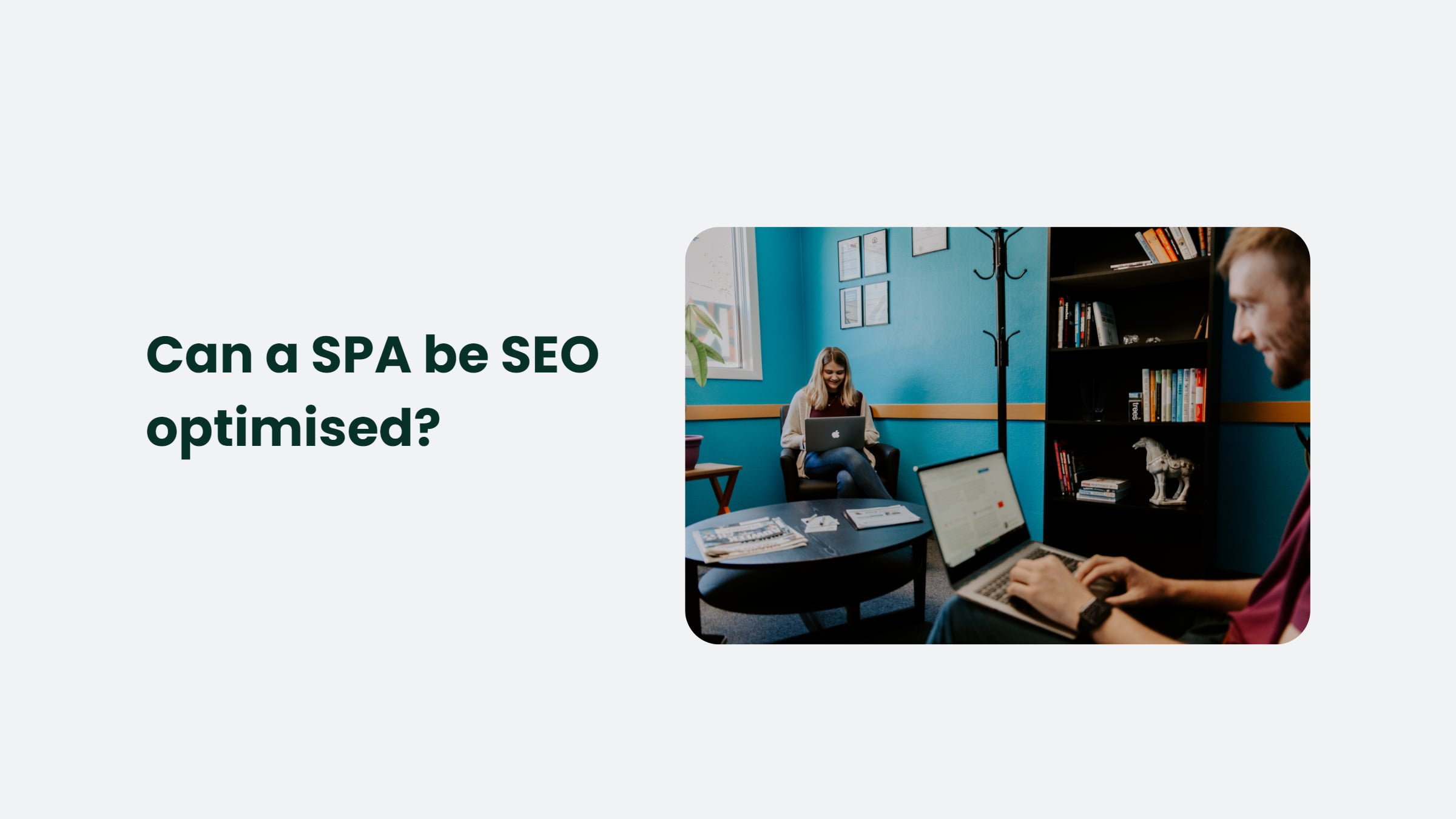I’m often asked about the relationship between search engine optimisation (SEO) and single-page applications (SPAs).

Can a SPA be optimised for search engines?
If so, how does it differ from traditional multi-page websites?
In this article, I’ll explore these questions and provide some best practices for optimising SPAs for search engines.
But first, let’s define what we mean by a SPA. Simply put, an SPA is a web application that loads a single HTML page and dynamically updates the page’s content as the user interacts with the app. It contrasts traditional multi-page websites, which load a new HTML page for each piece of content.
Benefits of SPA:
One of the main benefits of SPAs is that they provide a seamless and fluid user experience. Since the page doesn’t need to be reloaded as the user navigates through the app, the transitions between pages feel much smoother and faster. It is especially important for mobile users, as it reduces the time spent waiting for pages to load.
However, the dynamic nature of SPAs can make optimising them more challenging for search engines. Search engines rely on crawling the web and indexing the content of individual pages. When a search engine crawler visits a SPA, it may not be able to fully index the content because the content is being dynamically loaded via JavaScript.
It can make it difficult for the search engine to understand the purpose and content of the SPA, which can negatively impact its ranking in search results.
How to Optimise SPA:
That said, it is possible to optimise a SPA for search engines. Here are a few best practices to follow:
- Use server-side rendering (SSR): One way to make it easier for search engines to crawl and index a SPA is to use server-side rendering (SSR). With SSR, the server generates the initial HTML for the SPA, which is then enhanced with JavaScript as the user interacts with the app. This initial HTML is what the search engine crawler will see as an index, so it’s important to ensure it accurately reflects the SPA content.
- Use history API: Another way to optimise a SPA for search engines is to use the HTML5 history API. This API allows you to update the page URL as the user navigates through the app without reloading the page. It is important because search engines use the URL of a page as a key identifier when indexing content. By updating the URL as the user navigates through the app, you can help search engines understand the structure and content of the SPA.
- Use descriptive and keyword-rich URLs: In addition to using the history API to update the page URL, it’s important to use descriptive and keyword-rich URLs for the different sections of your SPA. It will help search engines understand the page’s content and improves its ranking in search results.
- Use meta tags: You can add meta tags to the head of your HTML page to provide additional information about the page. This information is used by search engines when indexing and ranking pages. For SPAs, it’s important to use relevant and keyword-rich meta tags to help search engines understand the page’s content.
- Use structured data: Structured data is a standardised format for providing information about a page to search engines. By using structured data, you can help search engines understand the content and purpose of your SPA, which can improve its ranking in search results.
Optimising a SPA for search engines is possible, but it requires some additional effort. By using techniques such as server-side rendering, the history API, descriptive and keyword-rich URLs, meta tags, and structured data, you can help search engines understand the content and purpose of your SPA, which can improve its ranking in search results.
While optimising a SPA for search engines is possible, it may still not perform as well as a traditional multi-page website in search results. It is because search engines are generally better at crawling and indexing the content of traditional websites with static HTML pages.
However, the benefits of a SPA, such as a seamless and fluid user experience, may still make it a worthwhile choice for some websites.
In addition to the above optimisation techniques, it’s also important to follow best practices for traditional SEO, such as using keyword-rich and unique page titles, writing compelling and informative content, and building high-quality backlinks. These practices will help improve the overall SEO of your website, regardless of whether it is a SPA or a traditional multi-page website.
The Bottom Line:
In conclusion, while it may be more challenging to optimise a SPA for search engines, it is possible to do so with the right techniques and approaches. By using server-side rendering, the history API, descriptive and keyword-rich URLs, meta tags, and structured data, you can help search engines understand the content and purpose of your SPA, which can improve its ranking in search results. While a SPA may not perform as well as a traditional multi-page website in search results, the benefits of a SPA may still make it a worthwhile choice for some websites.




